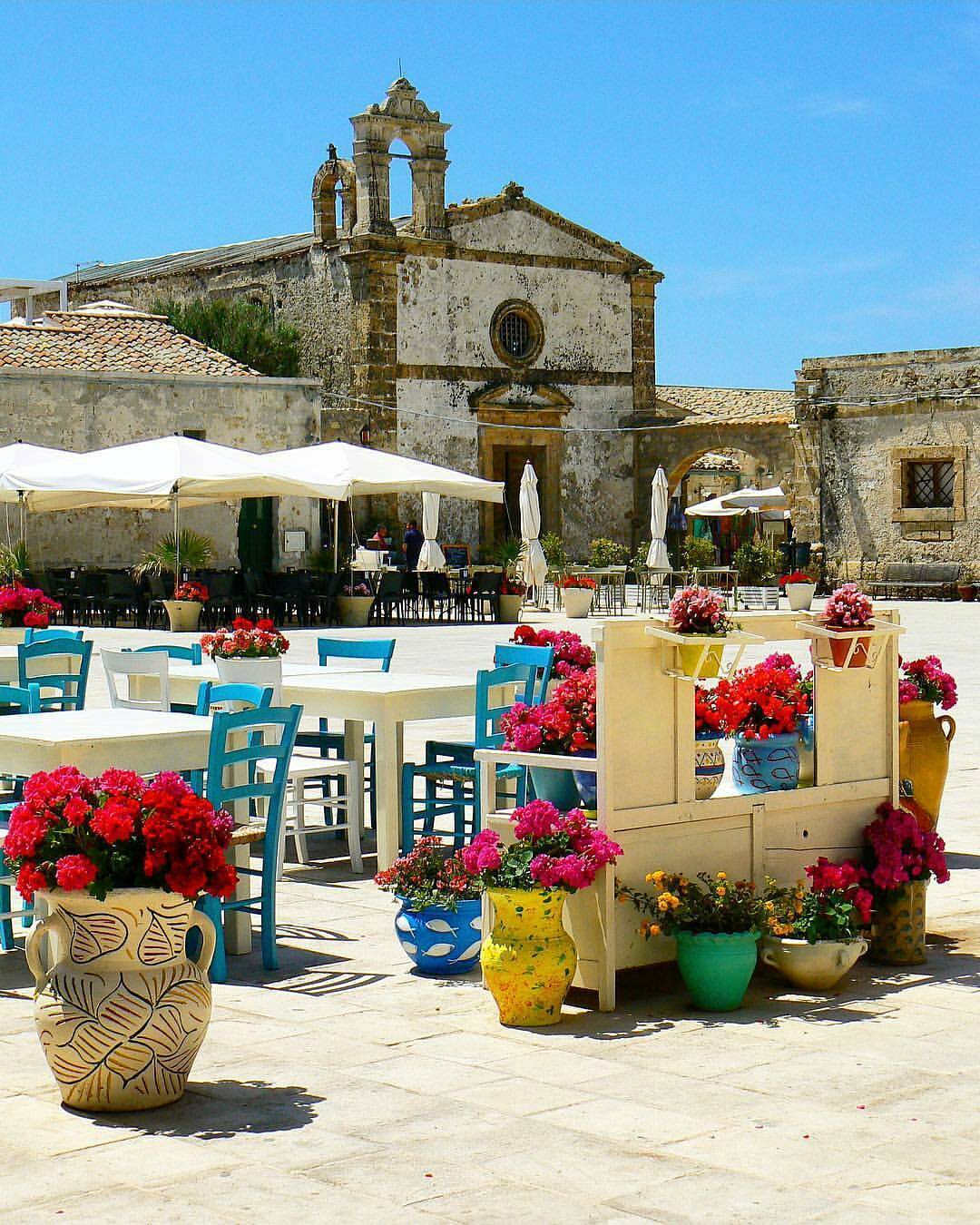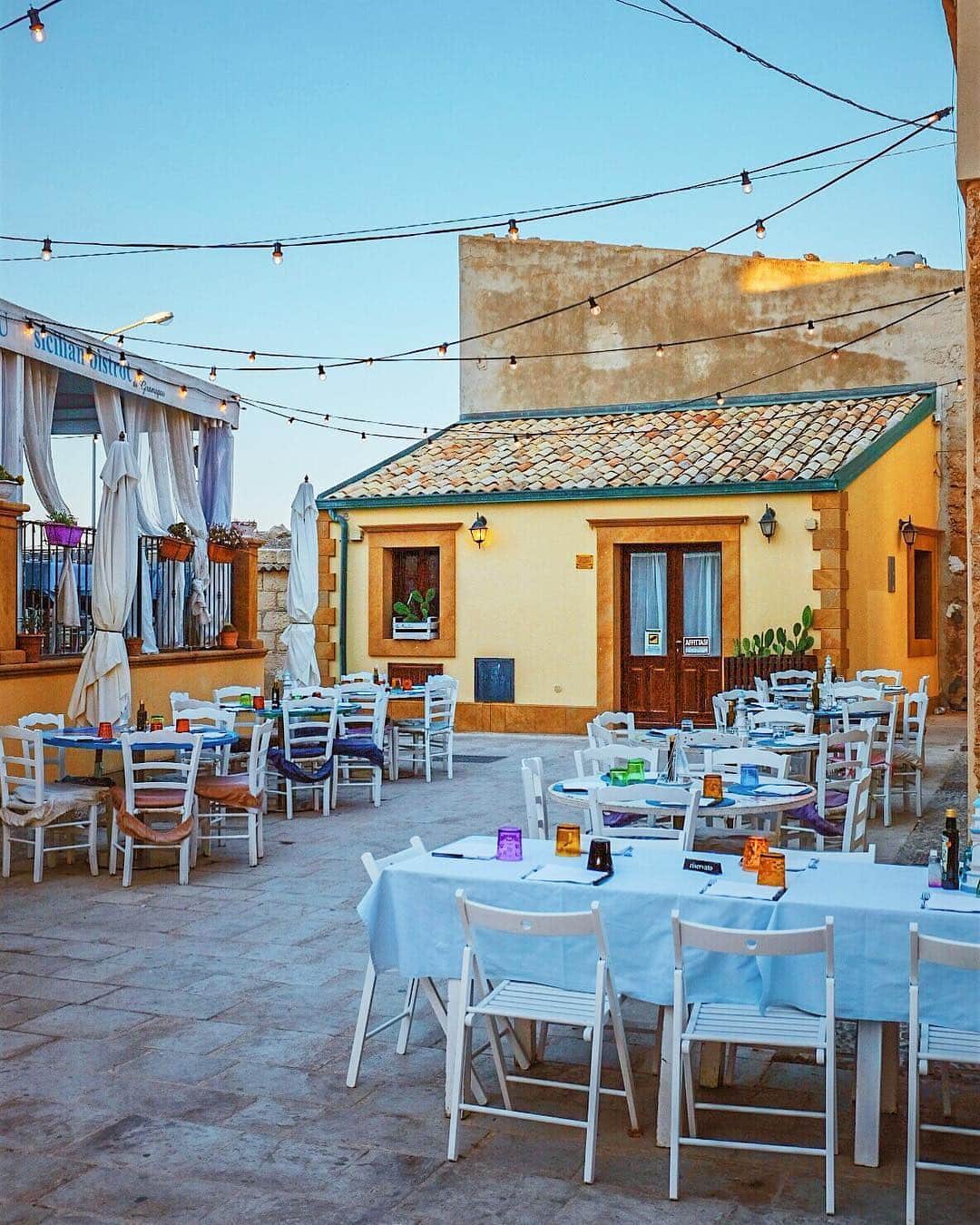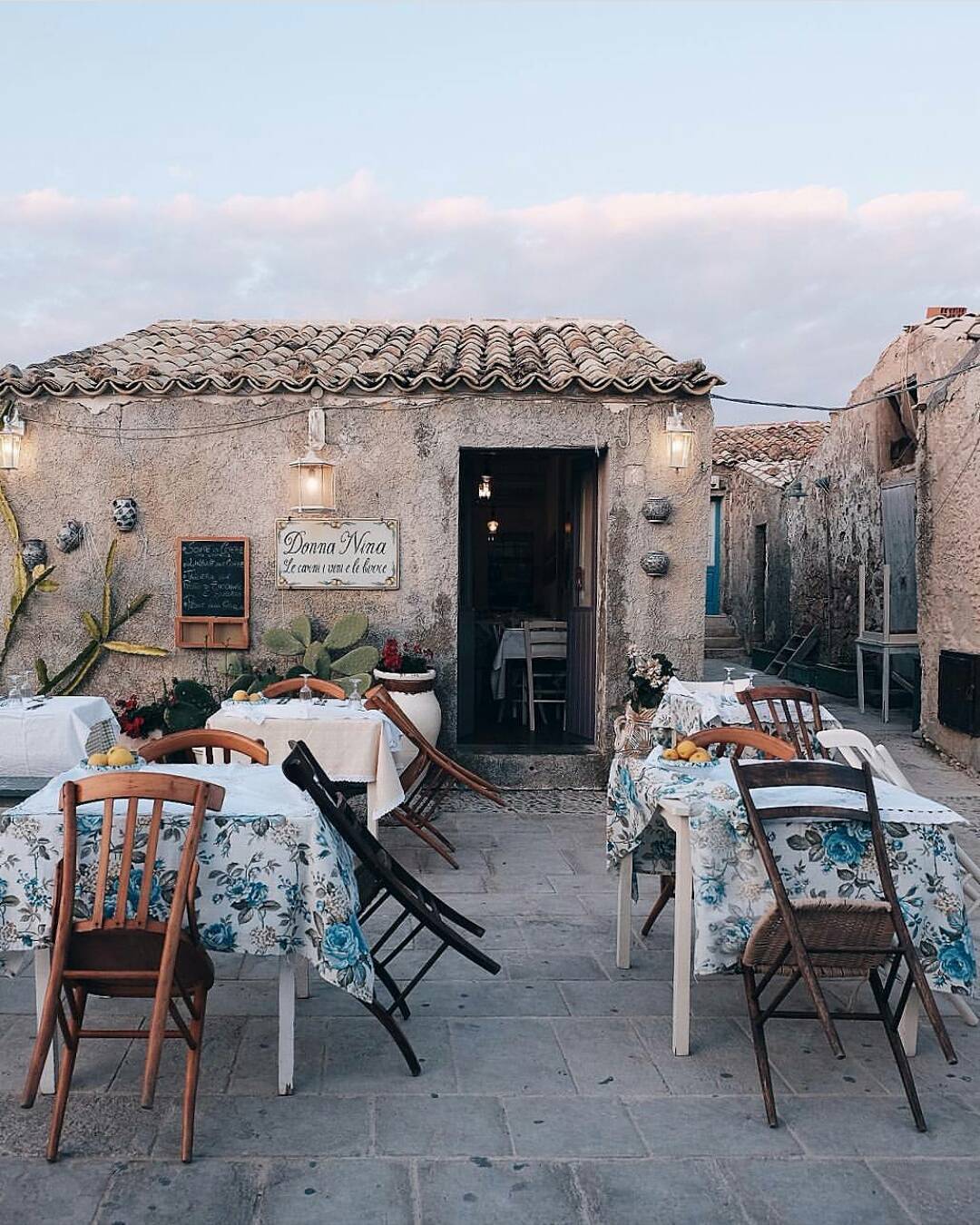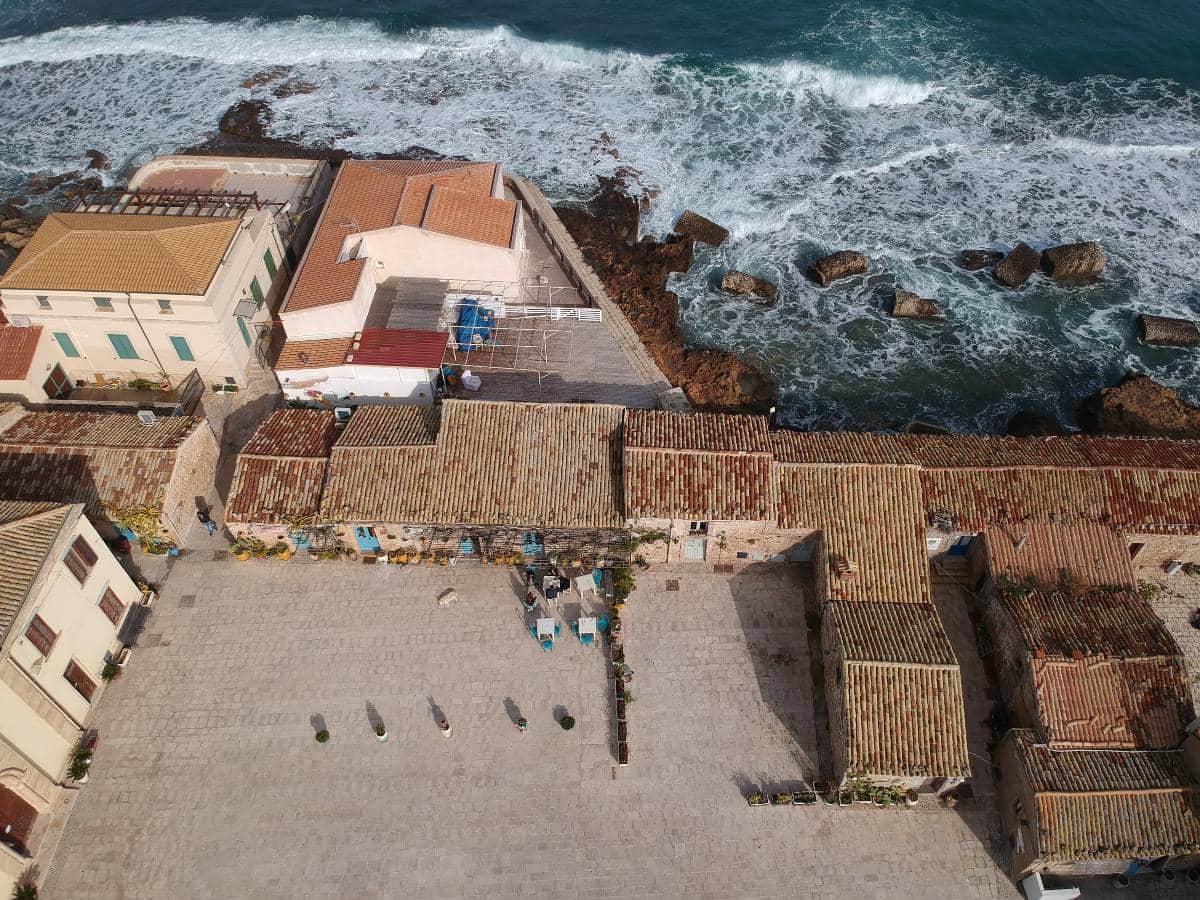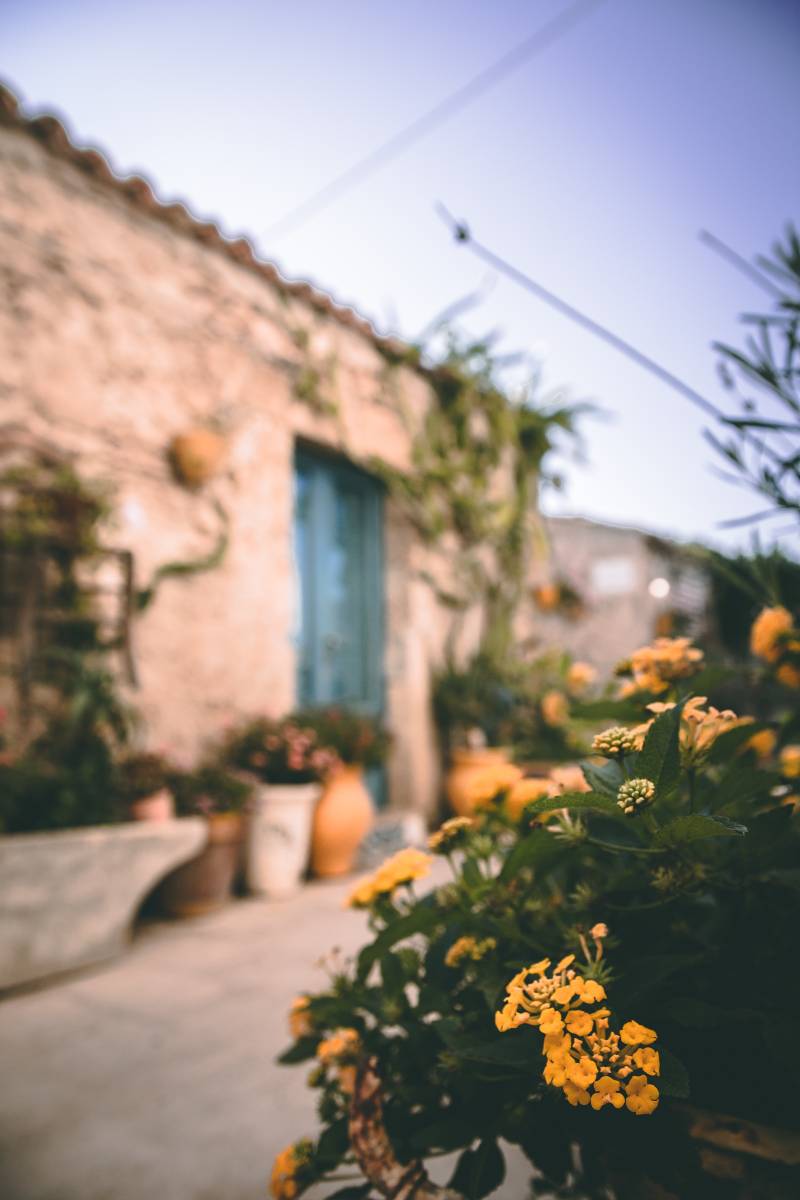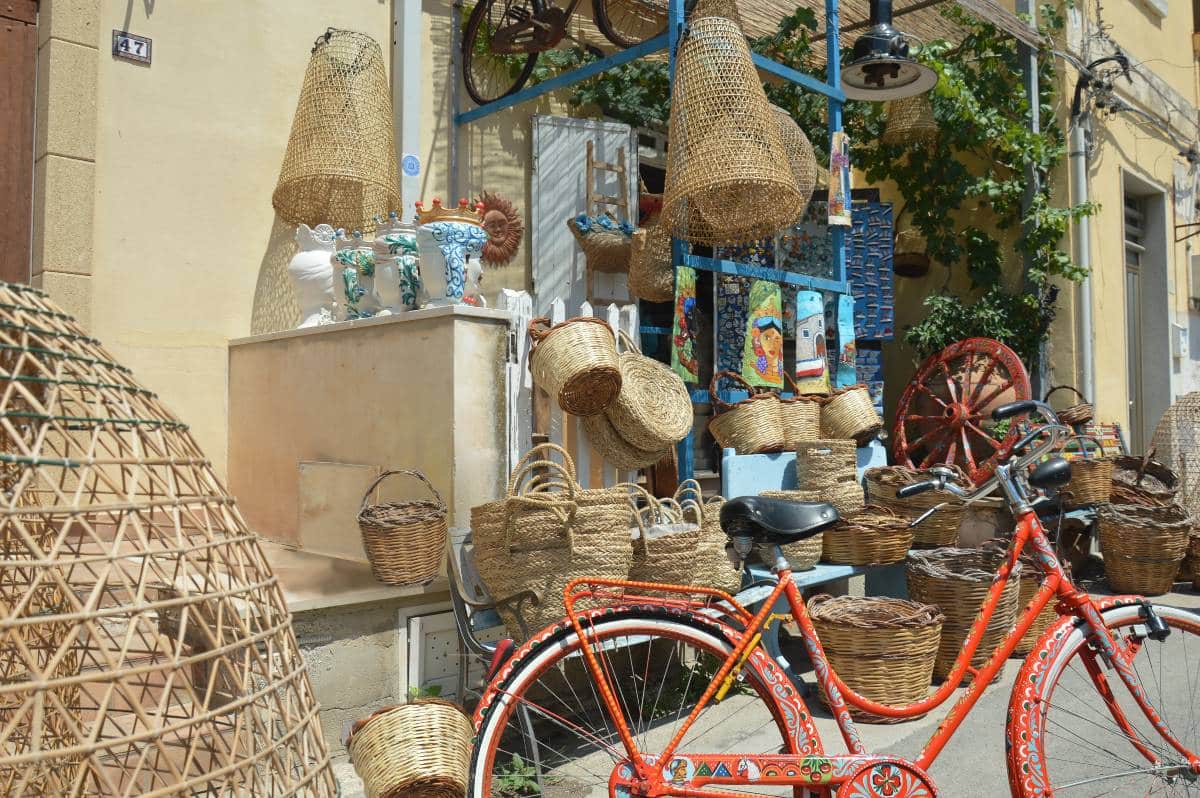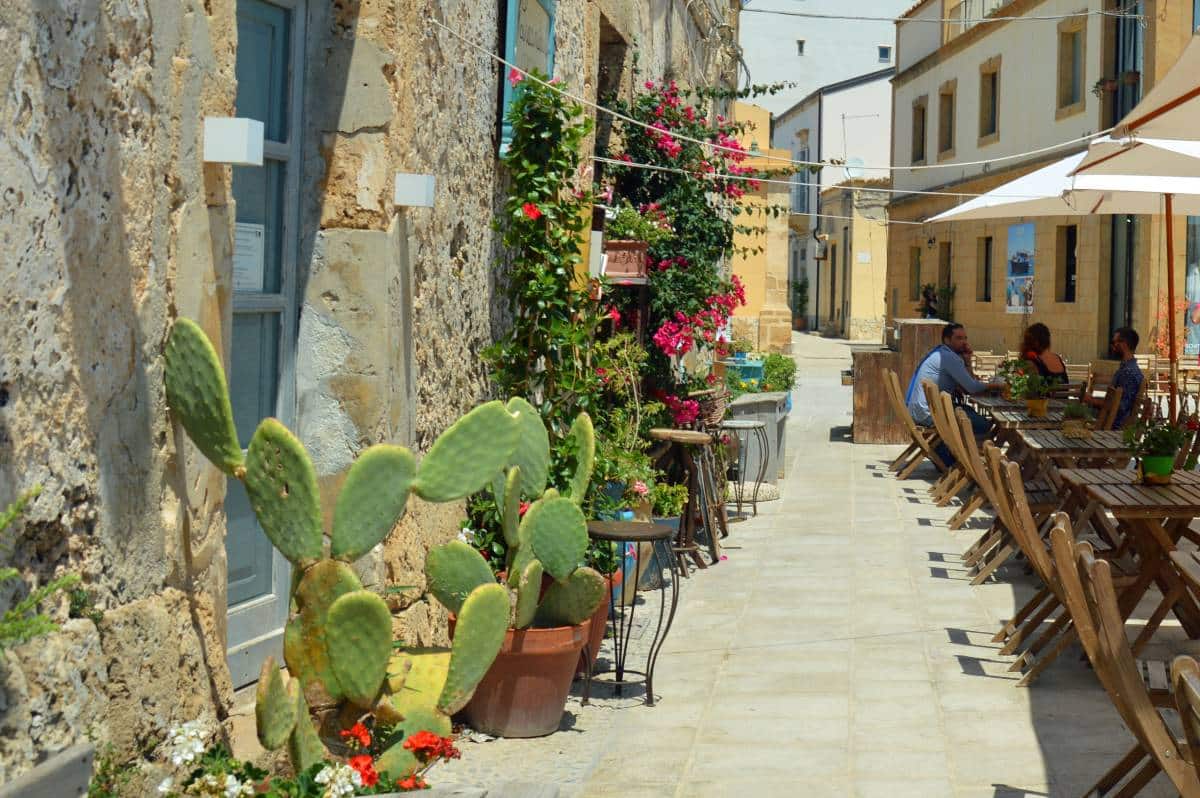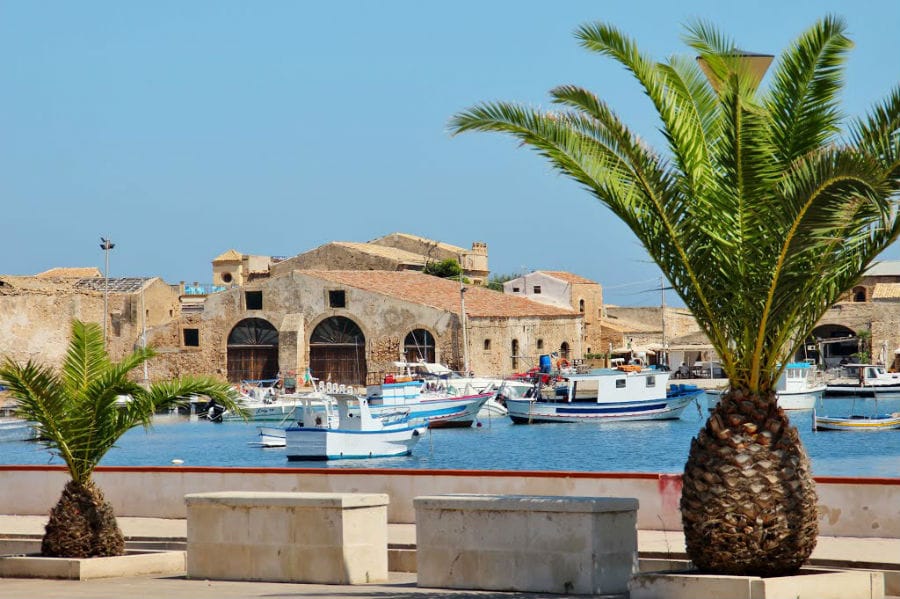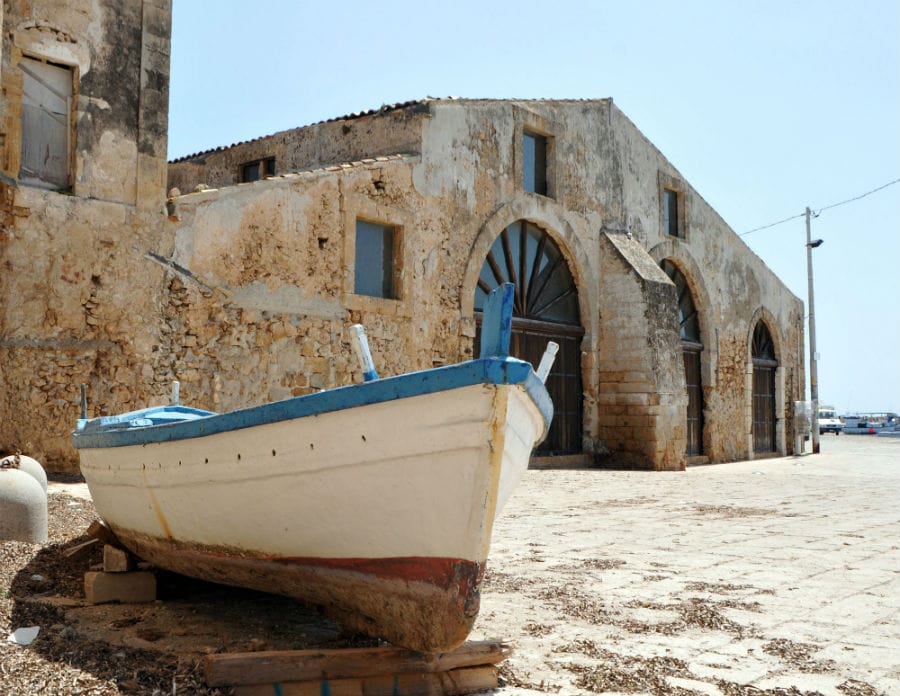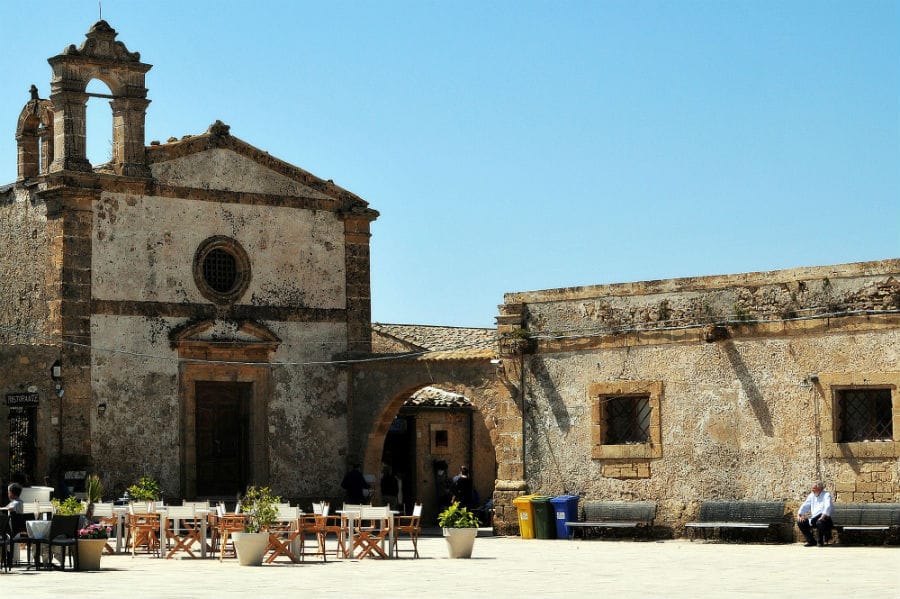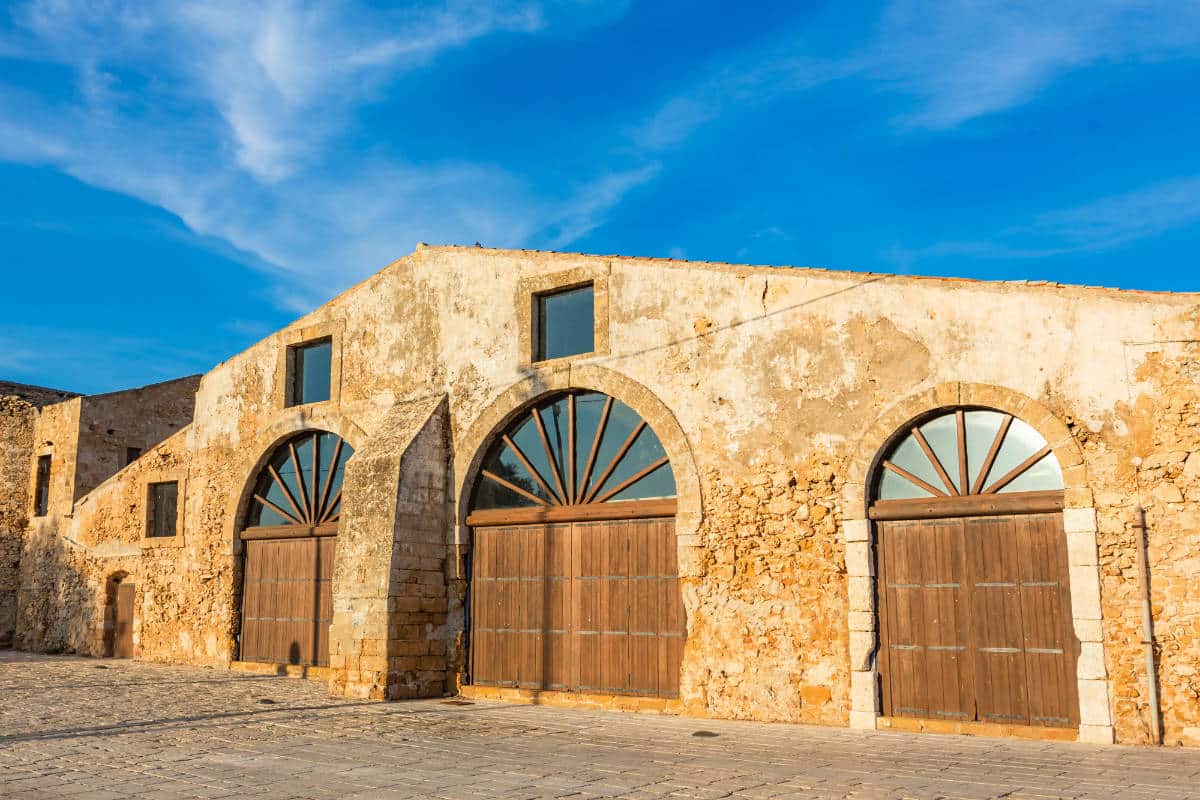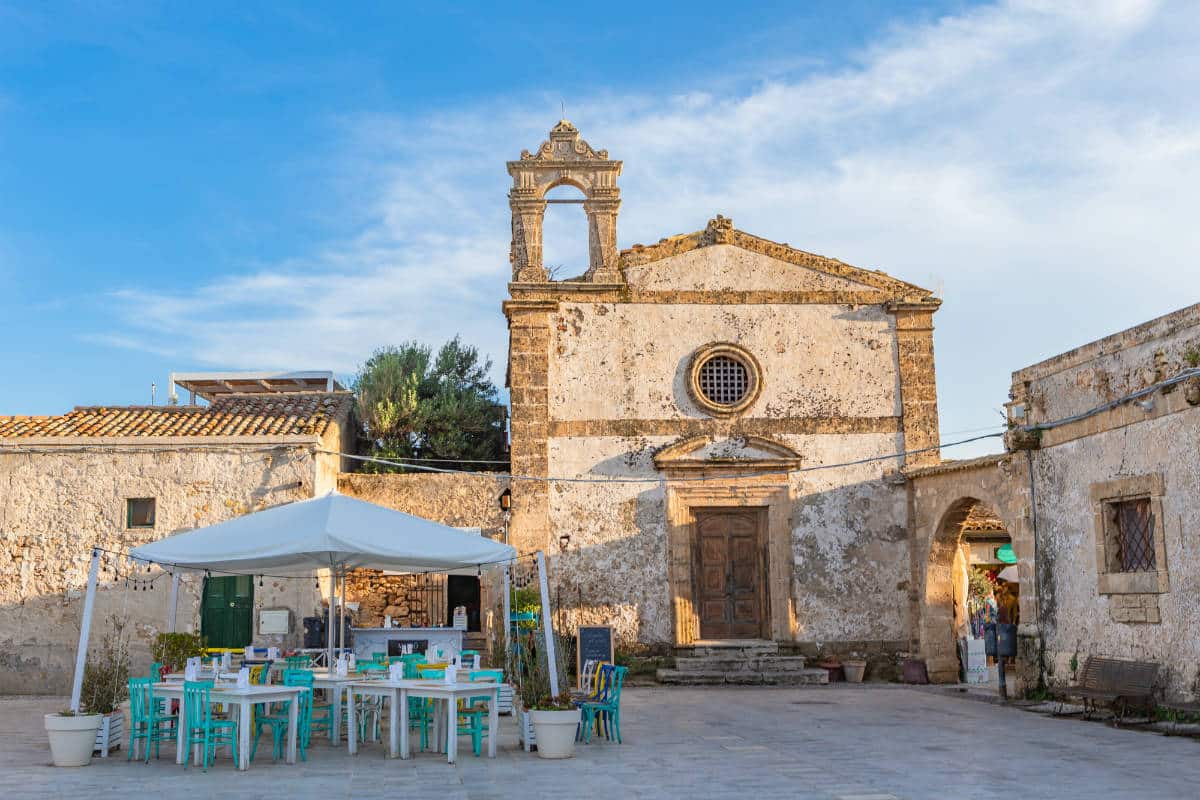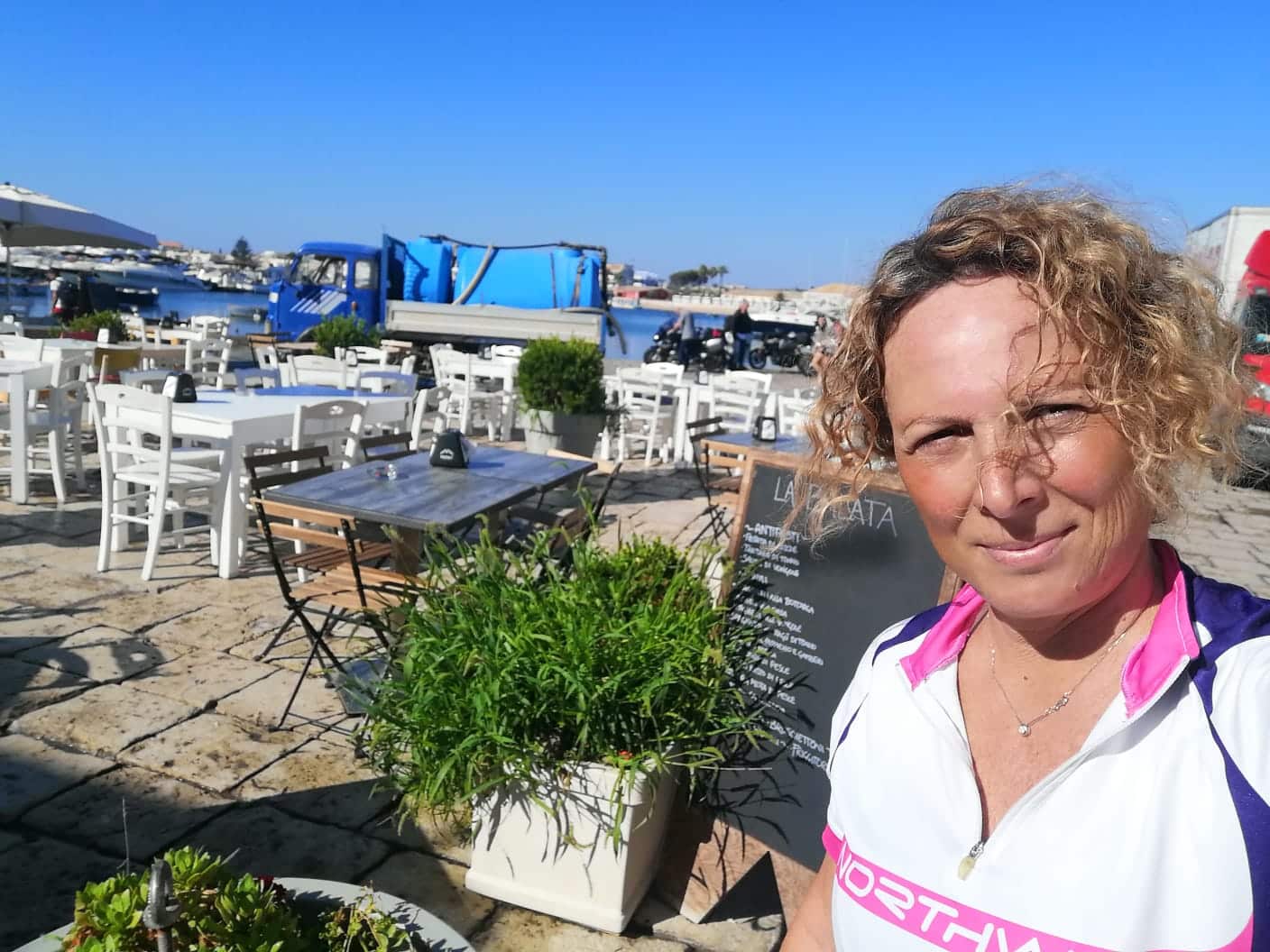The Tonnara and the Villadorata
The origin of the name Marzamemi, marsà al-ḥamÄ?ma or Baia delle Tortore, reveals the presence in the territory of the Arabs who built a tuna fishery here in 1000 AD. Another hypothesis wants the origin of the name from Marza and Memi, or small port.
The fishing village of Marzamemi, in the province of Syracuse, was founded in the 18th century after the Villadorata family bought the Arabic tuna trap in 1630, which was suitably enlarged: with the Villadorata family the fishermen's houses, the church and the family residence were then built.
The tuna fishery, where the tuna in oil and salted tuna was produced, remained in activity until 1969: the skiers, the long boats used by the tuna fishermen, were put back in the Loggia degli Scieri, a large hall with tuff arches that today hosts dinners, events and weddings.
Next to the Tonnara stands the Palace of the Prince of Villadorata built in sandstone and overlooking the bright Piazza Regina Margherita: the baroque building dates back to 1725 and on the facade you can admire stone gutters and the Villadorata coat of arms on the portal. Entering the Palace and passing a staircase from the tree-lined courtyard, you can visit the prince's room, with its small balcony overlooking the tuna fish.
From Piazza Regina Margherita to Balata
In addition to the Prince's Palace, two churches overlook the airy Piazza Regina Margherita: the oldest is the Church of San Francescmao da Paola dating back to 1752 and adjacent to the tuna fishery, while the other dedicated to the same saint (also the patron saint of Marzamemi celebrated every August with an evocative sea festival with regattas and cuccagna at sea) dates back to 1950, has a wooden door and a beautiful rose window in Romanesque style.
The square is literally surrounded by the old fishermen's houses, now requalified and turned into craft shops, ice-cream parlours and characteristic little restaurants where you can taste the typical products of the area, which are true local peculiarities: don't miss dishes based on Pachino ICG cherry tomatoes, smoked swordfish and obviously bluefin tuna, including mosciame, ventresca and bottarga.
In the evening the square lights up with a thousand lights that cross it from one end to the other and there is no better place to stop and enjoy the simple but authentic atmosphere of the place.
From Piazza Regina Margherita there are a series of picturesque alleys, one more enchanting than the other: walking along Vicolo Villadorata you arrive directly at the small port of Balata, certainly the most characteristic of the other in Porto Fossa, with its limestone paving.
From Balata, in addition to the peeling boats of the fishermen who still dance back and forth in their fishing trips, you can admire the Isola Piccola, also known as Isolotto Brancati after the doctor of Pachino who built his villa there, hosting among others the essayist and writer Vitaliano Brancati.
From the beaches of Marzamemei to the Vendicari Reserve
The beaches surrounding Marzamemi are many and suited to the needs of every type of tourist, from the largest and liveliest beach of San Lorenzo to that of Spinazza, perfect for families and snorkelers alike.
The beach of Isola delle Correnti, 17km away from Marzamemi, is very fascinating: the name suggests just the spectacle that can be seen in this place, with the sea currents of the Mediterranean and the Ionian Sea that meet.
Then there are the wildest and most uncontaminated beaches, located within the Vendicari Reserve between Marzamemi and Noto, just 20km away: at the Tonnara beach you can swim among the remains of the Byzantine civilization while at the Eloro beach, located at the edge of the mouth of the river Tellaro, there are the remains of an ancient Roman domus.
A holiday in Marzamemi cannot fail to include a visit to the beautiful "Riserva Naturale Orientata Oasi Faunistica di Vendicari" which, thanks to the presence of as many as four swamps, is a veritable sanctuary for migratory birds: birdwatchers can admire waders, herons, cormorants, knight of Italy, storks and graceful flamingos.
In addition to these wetlands, among which only the Small Marsh never dries up, the Vendicari Oasis also consists of beaches as previously mentioned, salt pans, long coastal dunes, fragrant Mediterranean scrub and lotomies: the latter are stone quarries made by man around the fifth century to extract the materials necessary for the construction of monuments and temples.
Whoever wants to discover the beauties of the Reserve can choose the itinerary that suits him best: in this case he will be able to discover not only the varied nature of the oasis but also its numerous archaeological sites such as a Hellenistic building where fish was processed, an ancient necropolis, an 18th century tuna-fishing factory and the Swabian Tower (also called Bafutu) of Arab origin, which was also once used for tuna processing.


